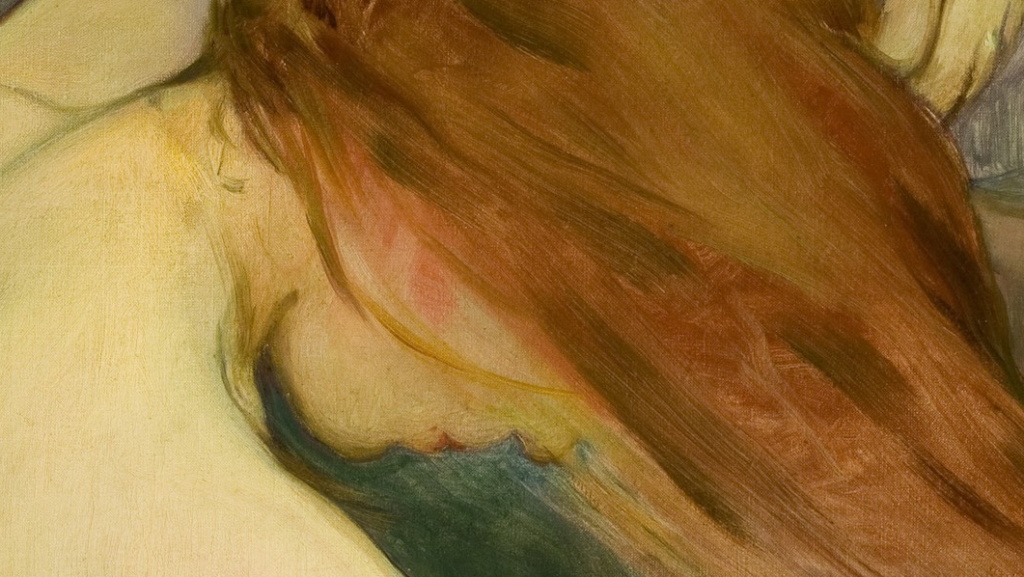Masterpiece Story: Portrait of Madeleine by Marie-Guillemine Benoist
What is the message behind Marie-Guillemine Benoist’s Portrait of Madeleine? The history and tradition behind this 1800 painting might explain...
Jimena Escoto 16 February 2025
10 January 2025 min Read
Władysław Ślewiński was a leading artist of the Young Poland movement—a modernist period in Polish arts at the turn of the 19th century. Today, we take a look at his most famous work—an intimate and sensual portrayal of a woman combing her hair. This masterpiece is now part of the collection of the National Museum in Kraków, Poland.
Władysław Ślewiński (1856–1918), born in occupied Poland, was one the first Polish artists who traveled to Paris to study art. Eventually, he settled there for most of his life. It was a rather unusual decision since, back then, most Polish painters chose Munich, Germany, as a place for their artistic training. However, the choice turned out to be a good move. Ślewiński became one of Paul Gauguin’s students and developed a unique art language, drawing from French art of the last decades of the 19th century. His paintings are a synthesis of Paul Gauguin and the works of the Pont-Aven group.

But today’s painting is less Gauguinesque—it reminds me of Edgar Degas’ classic works, which were created around 20 years earlier, or the famous works of Henri de Toulouse-Lautrec. The theme of a woman combing her hair is also rather unique in Ślewiński’s oeuvre. It is both intriguing and slightly disturbing. It combines Art Nouveau form with Young Poland’s sensuality.
In this intimate scene, the artist showed a half-naked woman during her toilette, combing her long hair before getting dressed. The model is sitting on a bed, her side to the viewer, and a cascade of intense copper-colored hair is falling over her face.

We do not know who the portrayed woman was. Maybe it was the artist’s wife—Russian painter Eugenia Shevtsov, whom he had met in Paris and whose portraits comprise a great part of Ślewiński’s work. In front of the woman, we can see a mirror. The odd reflection shows, most probably, not the sitter but the painter gazing at his model (or maybe at us?).

The composition, which seems to be cropped, and the simplified color palette are typical for Władysław Ślewiński’s art. The soft lines are clearly Art Nouveau’s influences. With time Ślewiński’s art changed: he started painting simplified forms in a very flat manner. He used strong contours while blending colors in the background. The artist sometimes ventured on the verge of abstraction but his style never departed completely from direct observation of nature.
DailyArt Magazine needs your support. Every contribution, however big or small, is very valuable for our future. Thanks to it, we will be able to sustain and grow the Magazine. Thank you for your help!